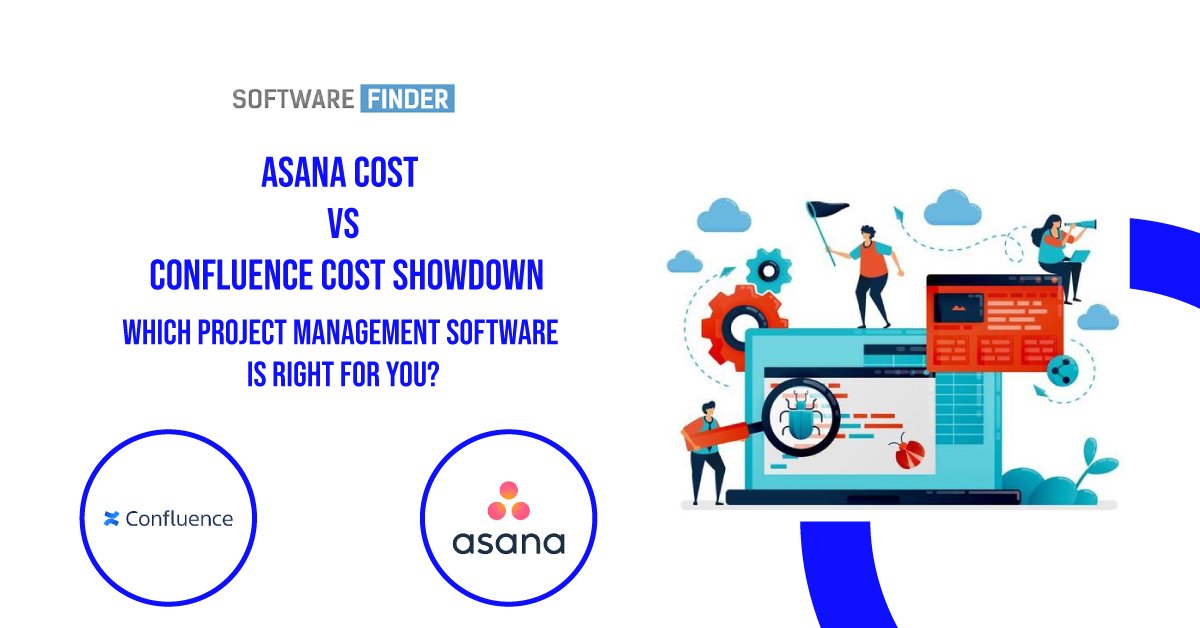Project management software is a vital tool for businesses of all sizes. It can help keep projects organized and on track, ensuring that everyone involved is aware of their responsibilities and deadlines. In this showdown, we will compare two of the most popular project management software options on the market: Asana cost vs Confluence cost. We’ll take a look at each platform’s features, subscription prices, demo offers, and onboarding ease to help you decide which one is right for you.
Asana Software
Asana software facilitates task coordination amongst teams, from everyday chores to major objectives. With Asana, teams are more confident, move more quickly, and accomplish more with fewer resources, regardless of their location or the number of departments involved. Asana is used by more than 119,000 paying customers and millions of free organizations in 190 countries to manage everything from organizational objectives to digital transformation to product launches and marketing activities.
It is time to free work from disparate spreadsheets and email and enable teams to cooperate and communicate more efficiently. With Asana, it doesn’t matter how many teams or departments are working on a project. They can all share context and give tasks to the right people, combine relevant work, share files, get quick updates, and build successful cross-functional workflows as long as you can keep up with Asana cost.
Confluence
Confluence project management is a collaborative platform where you can create and organize all of your documents. Confluence is open and collaborative, unlike document and file-sharing applications, and may help your team and business achieve greater success. Team value increases when more people in a business utilize it, whether they work in technical roles or in marketing, human resources, or finance.
Confluence cost can be justified by its intuitive interface, gathering and locating relevant data is a breeze. Create a centralized hub for all work-related, team-related, and interdisciplinary documents. Confluence pages may share with only you or the whole organization, depending on who has access to them. Hierarchical lists of pages, or “page trees,” are useful for organizing content and drawing attention to important sections of parent sites.
Asana vs Confluence
Asana and Confluence are both great options for project management software. They both offer a variety of features to help keep projects organized and on track. However, there are some key differences between the two platforms that you should take into account when making your decision.
Collaboration Tools
Asana offers a variety of collaboration tools to help teams work together more efficiently. With Asana, you can assign tasks to specific team members, add deadlines, leave comments, and upload files. Confluence also offers similar collaboration features. However, one key difference is that Confluence project management also allows you to create hierarchal lists of pages (or “page trees”) to help organize content and draw attention to important sections of parent sites.
Onboarding
Asana provides a number of resources to help you get started, including a comprehensive getting-started guide, video tutorials, and live chat support. Confluence License also includes a comprehensive getting started guide, video tutorials, and email support.
Third-Party Integrations
Asana integrates with a variety of third-party applications, including Google Drive, Dropbox, Slack, and Zapier. Confluence can also work with applications from other companies, such as Jira, Google Drive, and Dropbox.
Version Control
Asana offers a variety of features to help you keep track of changes and revisions to your projects. With Asana, you can see who made what changes and when, as well as leave comments on specific changes. Confluence also offers similar version control features.
Workflow Management
Asana offers a variety of workflow management features to help you plan, execute, and track your projects. With Asana, you can create and assign tasks, add deadlines, leave comments, and upload files. Confluence also offers similar workflow management features.
Template Management
Asana offers a variety of templates to help you get started with your projects. With Asana, you can choose from a variety of project management, marketing, and human resources templates. Confluence also has a number of templates, such as ones for project management, software development, and launching a product.
Optical Character Recognition
Asana offers optical character recognition (OCR) to help you digitize your paper documents. With Asana, you can scan and store your paper documents in the cloud, as well as search for text within images. Confluence does not offer OCR.
Multi-Language Support
Asana offers multi-language support for a variety of languages, including English, Spanish, French, German, and Japanese. Confluence also supports multiple languages, such as English, Spanish, French, German, and Japanese, among others.
Audit Trail
Asana offers an audit trail to help you track and monitor changes made to your projects. With Asana, you can see who made what changes and when, as well as leave comments on specific changes. Confluence also offers an audit trail.
Third-Party Integrations
Asana integrates with a variety of third-party applications, including Google Drive, Dropbox, Slack, and Zapier. Confluence can also work with applications from other companies, such as Jira, Google Drive, and Dropbox.
Security
Asana offers a variety of security features to help you protect your projects. With Asana, you can password-protect projects as well as set expiration dates and access controls. Confluence also offers similar security features.
Pricing
Asana pricing has a variety of options depending on the size of your team and the features you need. The basic plan starts at $10 per month for up to 15 users. Confluence pricing also has a variety of options, starting at $5 per user per month for up to 10 users.
Our Thoughts
Asana and Confluence are both great project management software options. They both offer a variety of features as well as a variety of pricing options. While Asana offers more resources for getting started, Confluence offers more third-party integrations. However, both software options are great for managing projects of all sizes.
Asana is “the easiest method for teams to monitor their work,” in the words of the company’s developers. You can keep tabs on your team’s progress using Asana in no time. Asana helps teams manage anything from day-to-day activities to large-scale initiatives, including features like task management, project management, chat, and dashboards. The asana.com website and mobile apps for iOS and Android are at your disposal. “One location to exchange, locate, and collaborate on information” is how Confluence is described. Instead of letting important information gets lost in people’s inboxes or on shared files, put it all in one place in Confluence where it can easily access, used, and updated.





